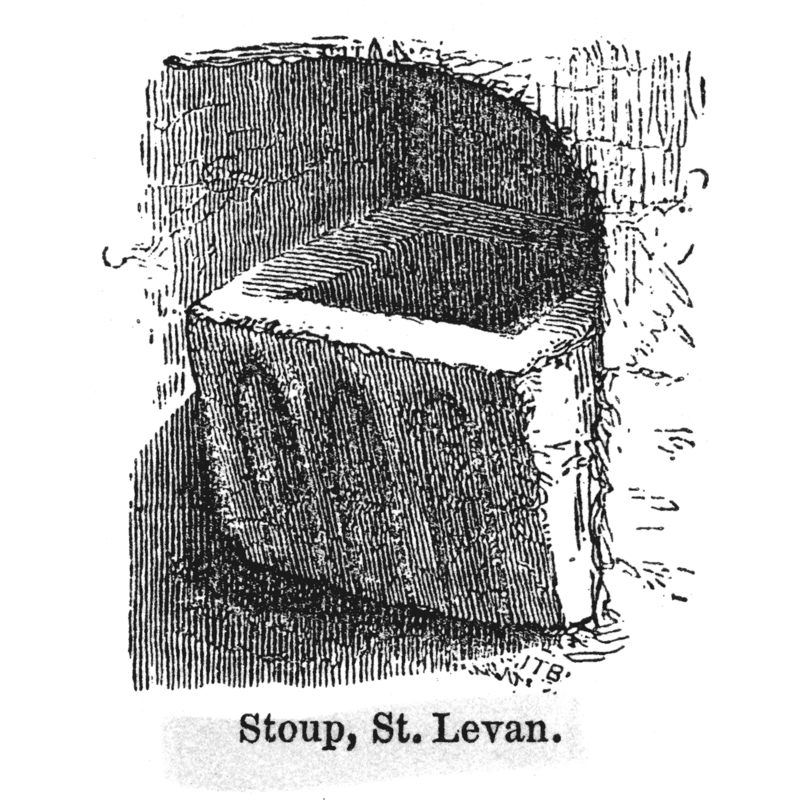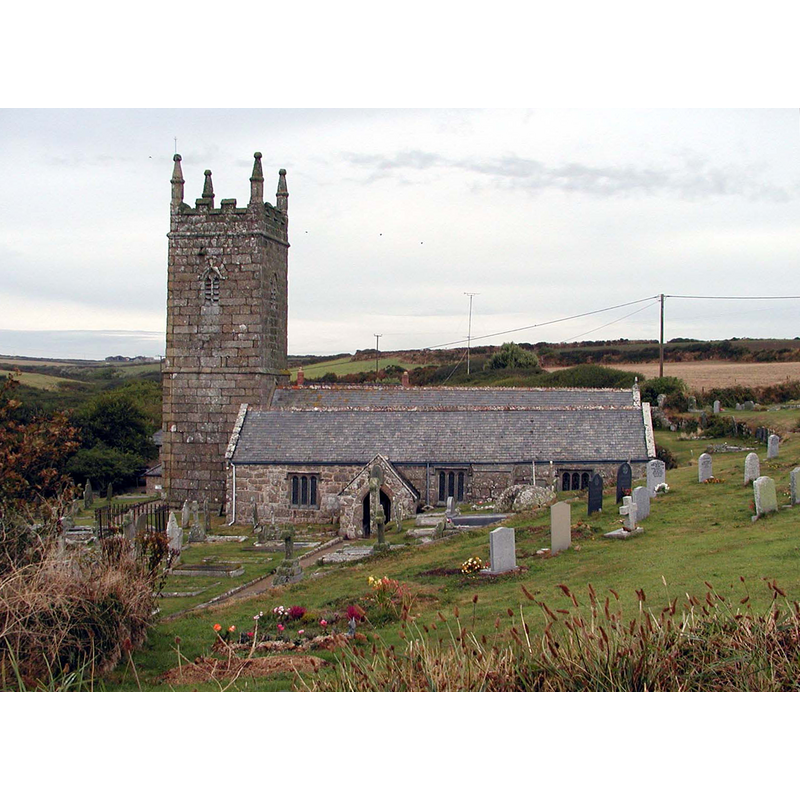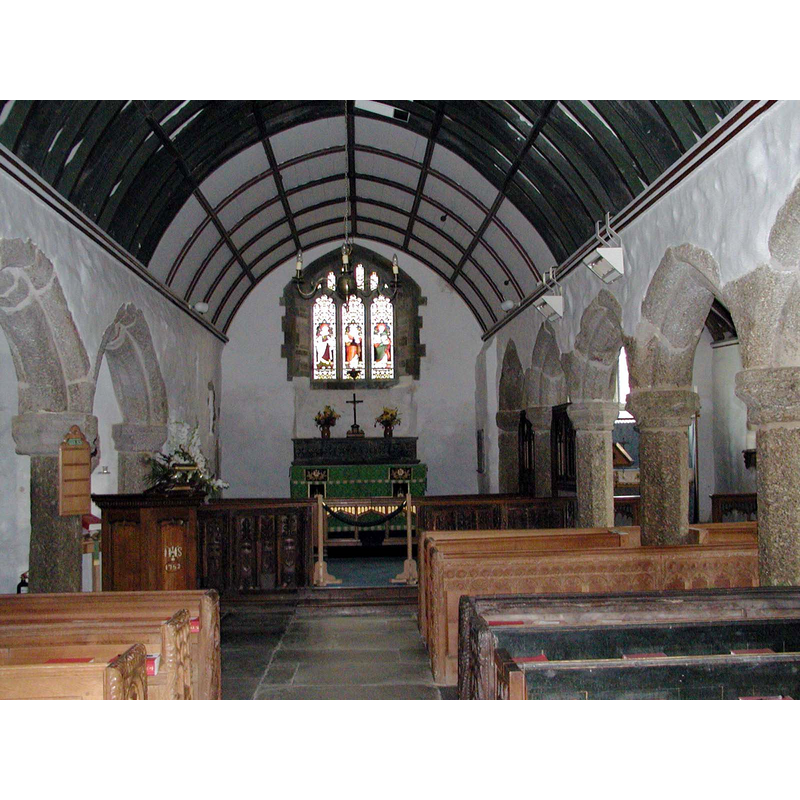St. Levan No. 2 / Saint Levan

Image copyright © [in the public domain]
PD
Results: 3 records
B01: design element - architectural - arcade - blind - pointed arches - 3
INFORMATION
FontID: 07623LEV
Object Type: Stoup
Church/Chapel: Parish Church of St. Levan
Church Patron Saints: St. Selevan [aka Levan, Livin, Salamon, Selyv]
Country Name: England
Location: Cornwall, South West
Directions to Site: Located about 5 km south of Land's End, also 5 km SW of St. Burian; the church is located in a deep hollow or 'gulph' and not easily visible from afar
Font Location in Church: In the porch, wall-mounted by the side of the door
Century and Period: 13th century, Early English
Credit and Acknowledgements: We are grateful to Julie Pitrone Williamson [jpwilli@twmi.rr.com] for the photographs of this church.
Font Notes:
Click to view
Described and illustrated in Blight (1862): "Entering by the porch, the first object to be noticed is the stoup, which is perfect. It is square, and ornamented with simple (pointed?) arcading on one side." The quadrangular holy-water stoup is wall-mounted by the side of the entrance; the front side of the basin is ornamented with a blind arcade of three arches. [cf. Index entry for St. Levan No. 2 for the baptismal font at this church]. This church is one of several in Cornwall and Wales in which the church was built near a holy well. Noted in Cox (1912): "square E[arly] E[nglish] arcaded stoup in porch". Tyrrell-Green (1928) informs that "chapels were sometimes built either directly above holy wells or in such close proximity to them that a simple arrangement could be made for the water from the sacred spring to flow into a reservoir within the chapel. It is probable that these well-chapels were erected in the first instance to serve as baptisteries", which would account for the choice of this church site, as well as those at Callington, Llangibby, Mathern, St. Cleer near Liskeard and others. In this place, only traces are left.One of several churches in Cornwall and Wales in which the church was built near a holy well. Tyrrell-Green (1928: 11) informs that "chapels were sometimes built either directly above holy wells or in such close proximity to them that a simple arrangement could be made for the water from the sacred spring to flow into a reservoir within the chapel. It is probable that these well-chapels were erected in the first instance to serve as baptisteries", which would account for the choice of this church site, as well as those at Callington, Llangibby, Mathern, St. Cleer near Liskeard and others.
MEDIUM AND MEASUREMENTS
Material: stone
Number of Pieces: one
Font Shape: square (wall-mounted)
Basin Interior Shape: square
Basin Exterior Shape: square
REFERENCES
Blight, John Thomas, "Cornish churches [pt. 2]", 212, April 1862, The Gentleman's Magazine: or, Trader's monthly intelligencer, 1862, pp. [391]-397; p. 392
Blight, John Thomas, Churches of West Cornwall: with notes and antiquities of the district, London: J.H. Parker & J. Parker, 1865
Cox, John Charles, Cornwall, London: George Allen & Company, 1912

